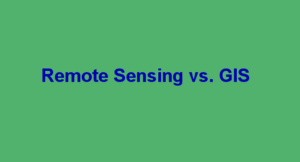[vc_row][vc_column][vc_column_text]
Multi spectral images like Landsat thematic Mapper and SPOT XS produce few broad wavelength bands but the hyperspectral image sensor will produce narrower wavelength bands. These bands can range from 100 to 200 or more. These measurement make it possible to derive continuous spectrum for each image cell, see below image. After sensor is adjusted, terrain and atmospheric condition are applied, then the results is verified against the collected spectrum value to categorize the type of vegetation or minerals or other features. Hyperspectral images contain ton of information, surface information and its spectrum behavior should be understand deeply and how it related to the hyperspectral images. This type of image are finding their importance in different fields as before it was just used for remote sensing application. Here are few applications of hyperspectral images.
[/vc_column_text][vc_separator style=”double” padding_top=”30″ padding_bottom=”30″][/vc_column][/vc_row][vc_row][vc_column][vc_column_text]
1. Remote Sensing: In remote sensing technology it is very important to distinguish earth surface features, each features have different spectrum band. Multi spectral satellite can capture image up few bands for example Landsat 7 have 8 bands. But multi spectral imaging satellite can capture earth surface in more than 200 bands which helps scientist to differentiate objects that were not possible in multi spectral imaging because of spectral resolution.
[/vc_column_text][vc_separator style=”double” padding_top=”30″ padding_bottom=”30″][/vc_column][/vc_row][vc_row][vc_column][vc_column_text]
2. Seed Viability Study: By using the hyperspectral image and plotting the reflectance spectrum one can conclude that whether those seed are viable or not viable. Seed might be looking same through naked eyes but its viability will be trace down by the hyperspectral image.
[/vc_column_text][vc_separator style=”double” padding_top=”30″ padding_bottom=”30″][/vc_column][/vc_row][vc_row][vc_column][vc_column_text]
3. Biotechnology: Hyperspectral technology has become popular in the biological and medical applications. It is easy and quick to acquire the data that can be used in the laboratory. Mostly they are used in the study of the wound analysis, fluorescence microscopy, and cell biology.
[/vc_column_text][vc_separator style=”double” padding_top=”30″ padding_bottom=”30″][/vc_column][/vc_row][vc_row][vc_column][vc_column_text]
4. Environmental Monitoring: Hyperspectral imaging is becoming widely popular for tracking changes in the environment. It is commonly used to understand surface CO2 emissions, map hydrological formations, tracking pollution levels, and more.
[/vc_column_text][vc_separator style=”double” padding_top=”30″ padding_bottom=”30″][/vc_column][/vc_row][vc_row][vc_column][vc_column_text]
5. Food: Hyperspectral imaging is widely used in the food sector. It is used in different discipline of food industry, bruise detection in apples, freshness of the fish, citrus fruit inspection, distribution of sugar in melons, and sorting of potatoes. For example apple bruise is not visible on the early stage and it takes few days to show dark color mark. In this type of scenario hyperspectral imaging techniques can be used to track the early stage of bruise for the quality control.
[/vc_column_text][vc_separator style=”double” padding_top=”30″ padding_bottom=”30″][/vc_column][/vc_row][vc_row][vc_column][vc_column_text]
6. Pharmaceuticals: Hyperspectral imaging technique is widely used to enhance the quality control. It is used widely to control the counterfeit or illegal drugs, managing the packaging of medicine and mixing of the powder.
[/vc_column_text][vc_separator style=”double” padding_top=”30″ padding_bottom=”30″][/vc_column][/vc_row][vc_row][vc_column][vc_column_text]
7. Medical Diagnose: Early disease detection and disease prevention are very important for the healthy body. Hyperspectral imaging technology can be used to detect the early of various types of cancer or retinal disease.
[/vc_column_text][vc_separator style=”double” padding_top=”30″ padding_bottom=”30″][/vc_column][/vc_row][vc_row][vc_column][vc_column_text]
8. Forensic Science: Hyperspectral imaging technology can differentiate fine spectral resolution, which makes it suitable in the forensic laboratory. It can be used in different ways: questioned document analysis, arson investigation, bloodstain visualization, fiber comparison, gun powder residue, visualization, duct tape examination, fingerprint enhancement, and TLC plate visualization. For example, hyperspectral imaging technology can differentiate between dark marks and bloodstains. This type of differentiating is quite important while solving the crime case.
[/vc_column_text][vc_separator style=”double” padding_top=”30″ padding_bottom=”30″][/vc_column][/vc_row][vc_row][vc_column][vc_column_text]
9. Thin Films: As hyperspectral imaging can distinguish tiny objects, it has been widely used for the quality control of the Thin Film manufacturing process.
[/vc_column_text][vc_separator style=”double” padding_top=”30″ padding_bottom=”30″][/vc_column][/vc_row][vc_row][vc_column][vc_column_text]
10. Oil and GAS: Hyperspectral imaging technology is widely used in the exploration of Oil and Gas. Now due to the possibility of hyperspectral imaging sensor it is possible to detect onshore oil seeps. Read this article, Exploring for onshore oil seeps with hyperspectral imaging.
[/vc_column_text][vc_separator style=”double” padding_top=”30″ padding_bottom=”30″][/vc_column][/vc_row][vc_row][vc_column][tagline_box call_text=”NOW READ:” call_text_small=”67 Important GIS Applications and Uses” title=”Read” color=”grey” margin=”0″ href=”http://grindgis.com/blog/gis-applications-uses”][/vc_column][/vc_row]



